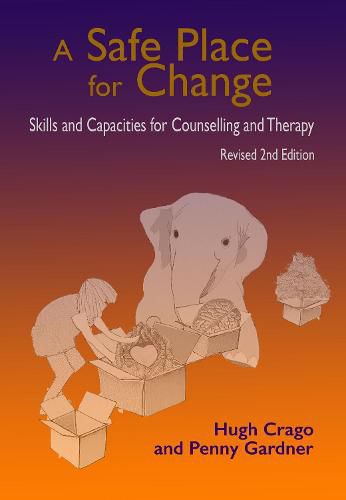Readings Newsletter
Become a Readings Member to make your shopping experience even easier.
Sign in or sign up for free!
You’re not far away from qualifying for FREE standard shipping within Australia
You’ve qualified for FREE standard shipping within Australia
The cart is loading…






Since its first publication in 2012, A Safe Place for Change has been adopted by both universities and private colleges as a set or recommended text in programs across Australia and New Zealand. Students have enjoyed its easy-to-read style and its abundant examples of what “real counselling’ looks like. While Crago and Gardner emphasise the vital importance of the therapeutic relationship, they refer to a wide range of different models and theories in direct relation to what counsellors actually do-the element that is often lacking in "Models of Counselling’ courses.
Now A Safe Place for Change appears in its second edition, from IP. In this revision, the authors have enlarged their coverage of the neurological research that has revolutionised our knowledge of brain functioning and provided hard evidence of how the therapeutic encounter really does change clients. The authors also include a complete new chapter on how psychotherapy unfolds over the long term.
Although Crago and Gardner originally wrote for students, their book has a great deal to offer experienced practitioners. Psychologists and social workers, in particular, may be surprised to discover here key concepts that did not form part of their professional training. Here is the distilled wisdom of two lives spent in doing (and teaching) counselling and therapy.
$9.00 standard shipping within Australia
FREE standard shipping within Australia for orders over $100.00
Express & International shipping calculated at checkout
Since its first publication in 2012, A Safe Place for Change has been adopted by both universities and private colleges as a set or recommended text in programs across Australia and New Zealand. Students have enjoyed its easy-to-read style and its abundant examples of what “real counselling’ looks like. While Crago and Gardner emphasise the vital importance of the therapeutic relationship, they refer to a wide range of different models and theories in direct relation to what counsellors actually do-the element that is often lacking in "Models of Counselling’ courses.
Now A Safe Place for Change appears in its second edition, from IP. In this revision, the authors have enlarged their coverage of the neurological research that has revolutionised our knowledge of brain functioning and provided hard evidence of how the therapeutic encounter really does change clients. The authors also include a complete new chapter on how psychotherapy unfolds over the long term.
Although Crago and Gardner originally wrote for students, their book has a great deal to offer experienced practitioners. Psychologists and social workers, in particular, may be surprised to discover here key concepts that did not form part of their professional training. Here is the distilled wisdom of two lives spent in doing (and teaching) counselling and therapy.